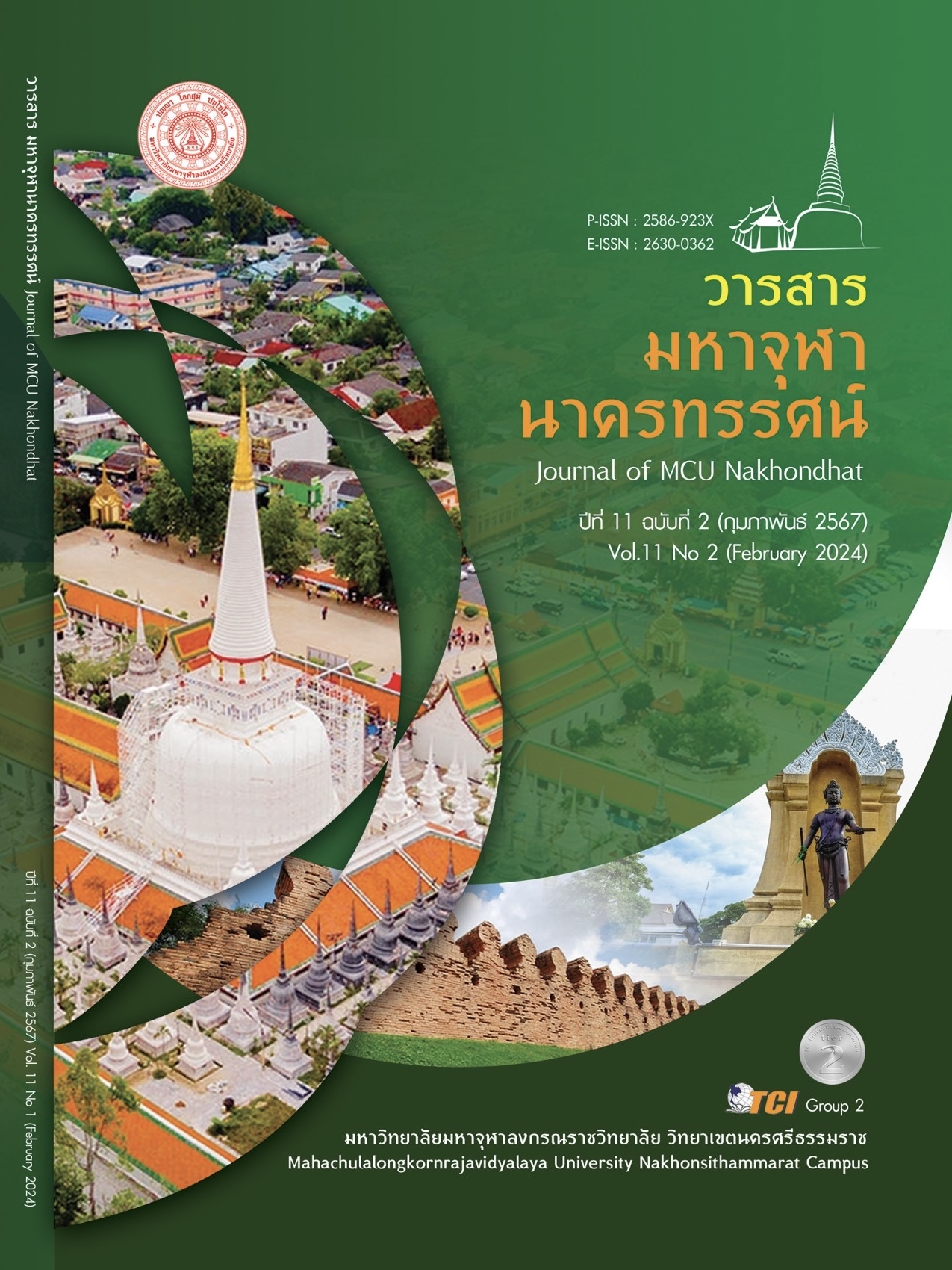ผลการจัดกิจกรรมการเรียนรู้ตามกระบวนการคิดให้เป็นคณิตศาสตร์ที่มีต่อความสามารถในการแก้ปัญหาทางคณิตศาสตร์และความสามารถในการสื่อสาร ทางคณิตศาสตร์ เรื่อง การประยุกต์สมการเชิงเส้นตัวแปรเดียวของนักเรียน ชั้นมัธยมศึกษาปีที่ 1 โรงเรียนสาธิตมหาวิทยาลัยศรีนครินทรวิโรฒ ประสานมิตร (ฝ่ายมัธยม)
Main Article Content
บทคัดย่อ
การวิจัยครั้งนี้มีจุดมุ่งหมาย 1) เปรียบเทียบความสามารถในการแก้ปัญหาทางคณิตศาสตร์ของนักเรียนก่อนและหลังได้รับการจัดการเรียนรู้โดยใช้กระบวนการคิดให้เป็นคณิตศาสตร์ 2) เปรียบเทียบความสามารถในการแก้ปัญหาทางคณิตศาสตร์ของนักเรียนหลังได้รับการจัดการเรียนรู้โดยใช้กระบวนการคิดให้เป็นคณิตศาสตร์เทียบกับเกณฑ์ร้อยละ 70 3) เปรียบเทียบความสามารถในการสื่อสารคณิตศาสตร์ของนักเรียนก่อนและหลังได้รับการจัดการเรียนรู้โดยใช้กระบวนการคิดให้เป็นคณิตศาสตร์ และ 4) เปรียบเทียบความสามารถในสื่อสารทางคณิตศาสตร์หลังได้รับการจัดการเรียนรู้โดยใช้กระบวนการคิดให้เป็นคณิตศาสตร์เทียบกับเกณฑ์ร้อยละ 70 โดยใช้ระเบียบวิธีวิจัยแบบ One - Group Pretest - Posttest Design กลุ่มตัวอย่าง คือ นักเรียนชั้นมัธยมศึกษาปีที่ 1 จำนวน 1 ห้องเรียน มีนักเรียน 30 คน ซึ่งได้มาจากการสุ่มแบบกลุ่ม โดยใช้ระเบียบวิธีวิจัยแบบ One - Group Pretest - Posttest Design ผลการวิจัย พบว่า 1) ความสามารถในการแก้ปัญหาทางคณิตศาสตร์ของนักเรียนหลังได้รับการจัดการเรียนรู้โดยใช้กระบวนการคิดให้เป็นคณิตศาสตร์สูงกว่าก่อนได้รับการจัดการเรียนรู้ อย่างมีนัยสำคัญทางสถิติที่ระดับ .05 2) ความสามารถในการแก้ปัญหาทางคณิตศาสตร์ของนักเรียนหลังได้รับการจัดการเรียนรู้โดยใช้กระบวนการคิดให้เป็นคณิตศาสตร์สูงกว่าเกณฑ์ร้อยละ 70 อย่างมีนัยสำคัญทางสถิติที่ระดับ .05 3) ความสามารถในการสื่อสารทางคณิตศาสตร์ของนักเรียน หลังได้รับการจัดการเรียนรู้โดยใช้กระบวนการคิดให้เป็นคณิตศาสตร์สูงกว่าก่อนได้รับการจัดการเรียนรู้ อย่างมีนัยสำคัญทางสถิติที่ระดับ .05 4) ความสามารถในการสื่อสารทางคณิตศาสตร์ของนักเรียนหลังได้รับการจัดการเรียนรู้โดยใช้กระบวนการคิดให้เป็นคณิตศาสตร์สูงกว่าเกณฑ์ร้อยละ 70 อย่างมีนัยสำคัญทางสถิติที่ระดับ .05
Article Details

อนุญาตภายใต้เงื่อนไข Creative Commons Attribution-NonCommercial-NoDerivatives 4.0 International License.
เอกสารอ้างอิง
กระทรวงศึกษาธิการ. (2551). หลักสูตรแกนกลางการศึกษาขั้นพื้นฐาน พุทธศักราช 2551. กรุงเทพมหานคร: โรงพิมพ์คุรุสภาลาดพร้าว.
ชมนาด เชื้อสุวรรณทวี. (2561). การเรียนการสอนคณิตศาสตร์. กรุงเทพมหานคร: โรงพิมพ์แห่งจุฬาลงกรณ์มหาวิทยาลัย.
สถาบันทดสอบทางการศึกษาแห่งชาติ. (2562). ค่าสถิติพื้นฐาน O - NET มัธยมศึกษาปีที่ 6 ปีการศึกษา 2562 (online). เรียกใช้เมื่อ 2 ธันวาคม 2563 จาก www.onetresult.niets.or.th.
สถาบันส่งเสริมการสอนวิทยาศาสตร์และเทคโนโลยี (สสวท.). (2563). การแถลงข่าวผลการประเมินในโครงการ PISA 2015. เรียกใช้เมื่อ 12 กันยายม 2565 จาก https://pisathailand.ipst.ac.th/news-8.
สถาบันส่งเสริมการสอนวิทยาศาสตร์และเทคโนโลยี. (2551). ทักษะ/กระบวนการทางคณิตศาสตร์. กรุงเทพมหานคร: ส.เจริญการพิมพ์.
สำนักงานคณะกรรมการการศึกษาขั้นพื้นฐาน. (2560). ตัวชี้วัด และสาระการเรียนรู้แกนกลาง กลุ่มสาระการเรียนรู้วิทยาศาสตร์ (ฉบับปรับปรุง พ.ศ. 2560). กรุงเทพมหานคร: โรงพิมพ์ชุมนุมสหกรณ์การเกษตรแห่งประเทศไทย จํากัด.
หทัยรัตน์ ยศแผ่น. (2556). “ผลของการจัดกิจกรรมการเรียนรู้คณิตศาสตร์โดยใช้กลวิธีการเสริมต่อการเรียนรู้ที่มีต่อมโนทัศน์และความสามารถในการสื่อสารทางคณิตศาสตร์ของนักเรียนมัธยมศึกษาปีที่ 2”. ใน วิทยานิพนธ์ครุศาสตรมหาบัณฑิต สาขาการศึกษาคณิตศาสตร์ บัณฑิตวิทยาลัย. จุฬาลงกรณ์มหาวิทยาลัย.
อัมพร ม้าคนอง. (2557). คณิตศาสตร์สำหรับครูมัธยม. กรุงเทพมหานคร: สำนักพิมพ์แห่งจุฬากรณ์มหาวิทยาลัย.
Grigoras, R. (2008). Modelling in environments without numbers - A case study. Retrieved January 12 , 2023, from http://ife.ens-lyon.fr/publications/edition-electronique/cerme6/wg11-17-grigoras.pdf
Kennedy, L. & Tipps, S. (1994). Guiding children's learning of mathematics. California: Woodworth Publishing.
OECD. (2009). OECD Future of Education and Skills 2030: Conceptual learning framework. Retrieved September 2, 2023, from http://www.oecd.org/education/2030project/teaching-
Rowan, T. E., & Morrow, L. J. (1993). Implementing K-8 curriculum and evaluation standards: reading from the arithmetic Teacher . Virginia: The National Council of teachers of Mathematics.
Sears, S. J. (2002). Contextual teaching and learning: a primer for effective instruction. Bloomington, Indiana: Phi Delta Kappa Educational Foundation.
Williams, D. L. (2007). The what, why, and how of contextual teaching in a mathematics classroom. Mathematics Teacher, 100(8), 572-575.
Yoon, C. (2009). Modelling the height of the antiderivative. Retrieved September 9, 2023, from http://www.merga.net.au/documents/Yoon_RP09.pdf


